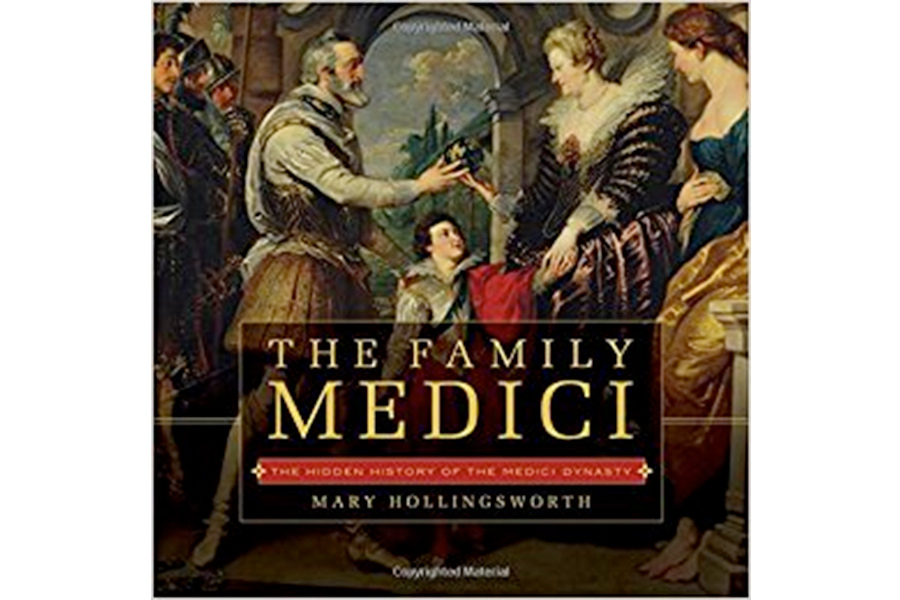'The Family Medici' vividly and clearly tells the story of one clan's merciless self-aggrandizement
Loading...
Renaissance scholar Mary Hollingsworth's new book The Family Medici promises in its subtitle “the hidden history of the Medici Dynasty,” which is part publisher-jargon (every book-season is so full of “hidden” histories that the unsuspecting shopper might legitimately wonder what pre-2018 historians did all day long) but also in a strange way part archival – even traditional.
For centuries – indeed, since the Medici first rose to prominence in Florence and started building their enormous, gaudy palazzo in the middle of town – writers have experienced two complementary impulses: the urge to write about the Medici, and the urge to take them down a peg or two. Even in the early days of the Quattrocento, contemporary chroniclers were already waxing bitter about these money-lending arrivistes with their boorish habits and their pretensions to dictatorship. And the crux of all this anti-Medici pamphleteering, then as now, was something called “the Medici myth”: the illusion, carefully created and fostered by the Medici themselves, that they were as interested in philanthropy as they were in mercenary arms deals or end-runs around representative government, and the head of their household, be it Cosimo or Piero or Lorenzo the self-dubbed Magnificent, was merely primus inter pares, just a humble citizen trying to raise his family and conduct some business, and never you mind any sordid rumors to the contrary.
The family spent lavishly to foster this myth, and in that sense it worked spectacularly: In the popular imagination (and in the droning narratives of hundreds of Florentine tour-guides leading their flocks around the key sites even as you read this), the Medici are thought of as the princes and princesses of the Italian Renaissance, the patrons of Brunelleschi, Donatello, Raphael, and most famously Michelangelo.
The “hidden history” of Hollingsworth's book is the real story underneath that myth, the story of a ruthless family of deal-breakers, liars, and grasping oligarchs intent on subverting the Florentine republic. Without fanfare or polemic, she takes readers deep into the details of many generations of the famous family, from the earliest migrants to the founding of the fortune by a vicious thug named Giovanni di Bicci to its pinnacle in the long Renaissance, with leaders like Cosimo and Lorenzo spending money freely to elevate the family (including bribing their way into Papacy, several times).
Hollingsworth does especially enlightening work telling the stories of the family's waning generations in the 17th and 18th centuries, and in those stories as in the rest of the book, she sticks to the facts and avoids the propaganda. In her telling, the Medici history is populated not by high-minded art patrons but by drunken sots and savage adventurers, essentially a crime syndicate, intent on amassing wealth and power without limit and without scruple.
Readers of "The Family Medici" might think that the “Medici myth” can't possibly survive it, and yet Hollingsworth's is just the latest in a long line of such correctives. Nearly a century ago, Colonel G. F. Young wrote a massive and best-selling work on the family whose sole purpose was to dispel the myth that he saw splitting the field of Medici studies.
“It is a strange fact that in their case the violent partisanship which swayed the historians of their time has been carried on into our own, and writers about them, whether belonging to their age or ours, are banded into two opposing camps,” he writes. “… those on the one side can see no faults, and give a picture which one feels to be untrue to life by reason of its successive eulogy; while to those on the other the name of Medici appears to act as an intoxicant, rendering them incapable of seeing what the very facts recorded by themselves demonstrate.”
And 40 years after Young's book appeared, English historian Christopher Hibbert felt compelled to write it again; his "The House of Medici: Its Rise and Fall" characterized itself as a “more reliable” version of Young, but its mission was identical – to dispel the Medici myth and lay out the grimy, criminal facts in its place.
And now, 50 years later, Mary Hollingsworth takes up the same job, telling in vivid and well-researched prose the particulars of one clan's merciless self-aggrandizement. Her Medici men and women are generous art patrons, yes, but always with the end goal of burnishing their own reputations and making Florence their sole possession in the world's memory.
And Hollingsworth's implication is correct and praiseworthy, as was Hibbert's and Young's: that the evil men do ought to live after them, that canvasses ought not to cover corpses – that we should remember the Medici for what they were, not for what they wanted us to think they were.








